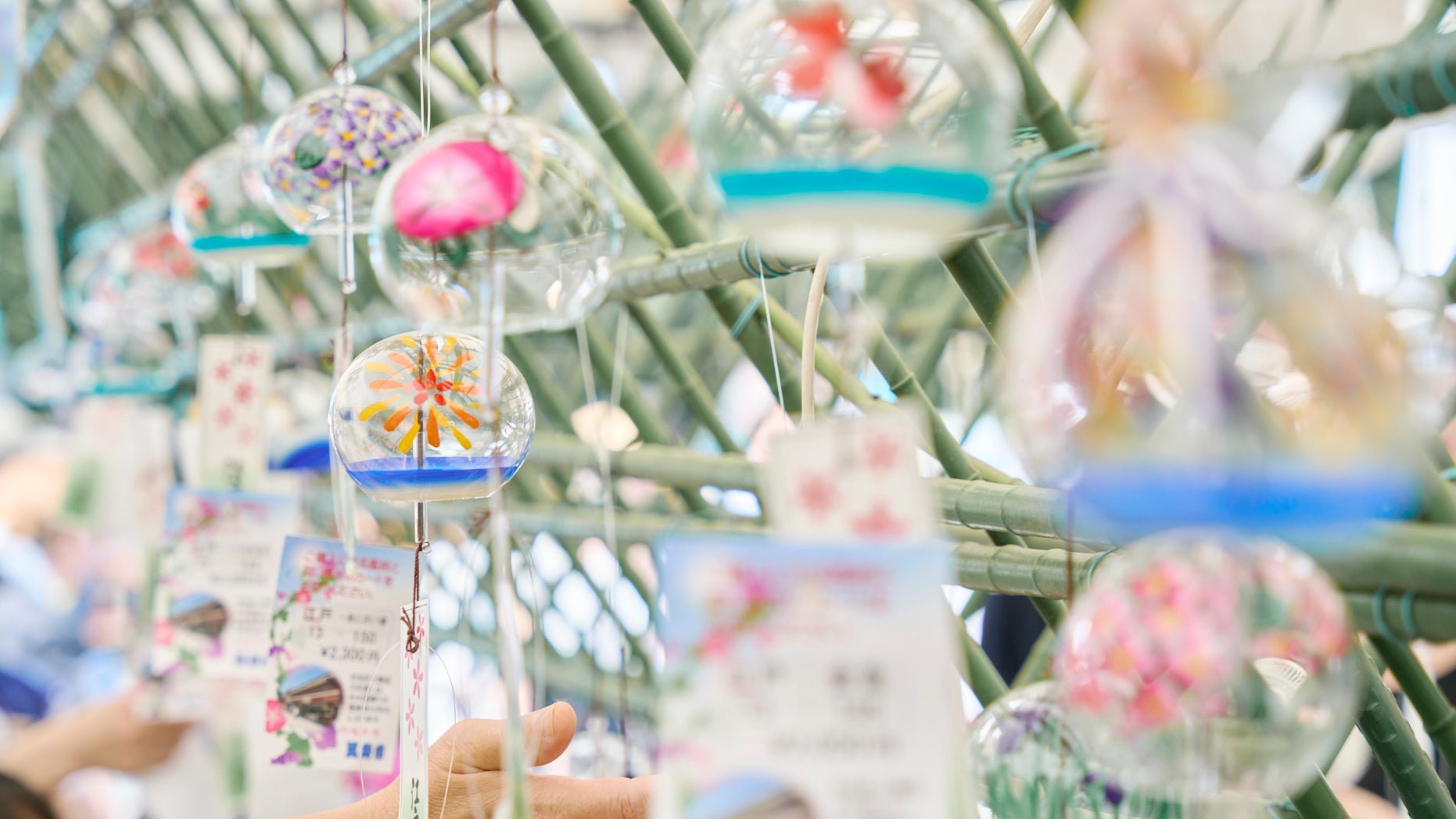
Kawasaki Daishi Furin-Ichi: Exploring 800 Types of Japanese Wind Chimes
Written by Ito Ryo
Furin, Japanese wind chimes, are delicate Japanese crafts made from materials such as metal, glass, and ceramics. These small bells sway with the natural breeze, producing a soothing sound that has been enjoyed by the Japanese for centuries. With the arrival of summer, many people hang furin under the eaves of their homes, relishing their melodious tones. This tradition has cemented furin as an enduring symbol of the Japanese summer.
Each region in Japan boasts its own unique variations of furin, differing in materials, sounds, and designs. The vast array of wind chimes crafted throughout Japan attests to the widespread love and appreciation for this charming summer adornment.

In this blog, we will delve into the history and auditory charm of furin. Additionally, we will explore the wide variety of wind chimes found at the annual Kawasaki Daishi Furin Ichi, a summer event that showcases an impressive collection of 800 different types of furin from across the country.
table of contents
The Enigmatic History of Japanese Furin

The origin of furin is believed to trace back to a metal bell called futaku, which was hung from the eaves of Buddhist temples in Japan to ward off evil spirits.
However, the loud clanging sound of futaku, described as "garangaran" or "karankaran," starkly contrasts with the gentle "chirinchirin" or "rinrin" tones of today’s furin. Moreover, a futaku is larger and more rugged in appearance, quite different from the delicate and refined look of a furin.

Futaku/The above image is for illustrative purposes only.
The transition from futaku to furin, including when and how it occurred, remains a mystery. Additionally, it is unclear when furin became a quintessential symbol of summer.
What is known, however, is that by the Edo period (1603 CE–1868 CE), furin were already in existence. Initially, like futaku, they were used as talismans to ward off evil spirits and were hung year-round, not just in the summer.
The Allure of Furin Part 1: The Cooling Sound that Relieves Summer Heat
A typical furin consists of three main parts: 1. the sotomi, or outer shell, 2. the zetsu, or clapper, which hangs inside the sotomi, and 3. the tanzaku, a strip of paper or material attached to the zetsu, similar to a bookmarker.
When the tanzaku catches the wind, it sways and moves the zetsu, which strikes the sotomi to create the delicate sound of the furin.

Japan's summers are hot and humid, often uncomfortable to endure. Traditionally, the Japanese have found various ways to make this season more bearable, incorporating creative solutions to their daily lives, from clothing and cuisine to home design. Among these, the furin gradually gained popularity throughout Japan, becoming a beloved feature in homes.
During the high temperatures and humidity of summer, even a gentle breeze can bring a sense of relief when it touches the skin. The sound of the furin makes people aware of the breeze, and this auditory cue can create the illusion of a cooling sensation, helping to alleviate the discomfort of the heat. The Japanese have long embraced this psychological cooling effect to combat the sweltering summer weather.

The Allure of Furin Part 2: The Soothing Sound that Eases the Summer’s Heat
The appeal of furin for us Japanese is not limited to the sensation of coolness.
An analysis of the sound of furin reveals that it comprises both high and low tones. Specifically, the lower tones consist of multiple frequencies that resonate and cancel each other out in a complex interplay. Unlike the mechanical consistency of an alarm, the sound of furin is irregular, created by the ever-changing natural wind.
This irregular, multi-layered sound—known as "fluctuating sound"—is found to be particularly pleasing to the human ear. It is this fluctuation that provides a sense of comfort and relaxation. Therefore, the chime of the furin not only helps mitigate the stress of the summer heat but also offers comfort to our weary minds.
The Deep World of Furin Discovered at the Kawasaki Daishi Furin Ichi


On a bright and hot day, just after tsuyu “rainy season,” Team Musubi visited this year’s event. We were greeted by the gentle and refreshing sounds of furin resonating from all directions, creating a truly enchanting atmosphere.
Metal? Porcelain? Ceramic? The Unique Personalities of Furin by Materials


Wind chimes made from Imari ware, a traditional porcelain from Saga Prefecture, are fired at high temperatures of 1300 degrees Celsius, resulting in a clear, glass-like high-pitched tone. The beautiful contrast between the slightly bluish-white base and the colorful patterns is particularly captivating.

Artisans Speak: The Unique Characteristics and Craftsmanship of Edo Furin
Glass, with its smooth and clean appearance and cool touch, is a popular material for summer tableware. Glass furin are made throughout Japan, from Hokkaido to Okinawa.

Today, only two studios still produce Edo Furin, one of which is Shinohara Maruyoshi Furin, the maker of the yaku-yoke daruma furin. On the day of our visit, artisan Shinohara Michihiro was inscribing names onto the wind chimes, and we had the opportunity to speak with him in detail about his craft.
According to Shinohara, the defining features of Edo Furin include the technique of blowing molten glass without using molds, creating a refined sound through the deliberately jagged edge of the opening, and the beautiful, lightweight appearance achieved by painting designs from the inside.

Regarding the sound of the wind chimes, he explained, "We aim for a slightly lower, calming tone that makes you want to take a nap. To achieve this resonance, we ensure the glass bell is uniformly about 1mm thick."
Since each furin is hand-made by artisans, the sound varies slightly with each piece, and the tone can also change depending on the shape and size of the wind chime. It’s best to choose a furin based on the sound you prefer by hearing them firsthand.
Additionally, wind chimes, not just Edo Furin, are traditionally meant to ring occasionally. They are typically hung under the eaves on the lower floors of houses where a gentle breeze is most likely to blow during the summer, a season known for its stillness.
"However, many modern buildings no longer have eaves, and it is not uncommon for people to live in high-rise apartments rather than houses. As a result, more people are now decorating their interiors with wind chimes, hanging them from curtain rails and special stands to display them," Shinohara explained.

When asked about the designs, Michihiro said, "Our workshop is known for brushwork that conveys a sense of motion. We employ various techniques, such as painting the entire furin, applying designs to specific parts, or etching patterns by etching the surface of colored glass."
We were amazed by the variety and ingenuity within the Edo Furin tradition. Shinohara's insights were full of surprises and discoveries. For one of our members, it was their first time seeing ceramic wind chimes in person, which made the experience even more special.
"There are about fifty different motifs, including variations in color. Some designs carry wishes for 'achievement' or 'health.' Japanese motifs like Mt. Fuji and cherry blossoms are particularly popular among international customers," he added.
The Kawasaki Daishi Furin Ichi was an event where visitors could enjoy the different shapes, sizes, colors, and patterns of various wind chimes and listen to their unique sounds, all while immersing themselves in Japan’s rich furin culture.
What was most impressive was the visual splendor of the wind chimes from across Japan. Each furin—whether through its material, texture, color, design, or accessory—was crafted to evoke the essence of summer and a sense of coolness, making its sound even more enchanting.

Furin crafted from traditional Japanese materials like metal, ceramics, glass, and wood embody both the charm of Japan and artistic beauty. Even in spaces with little wind, they make for a delightful interior decoration. They’re also perfect souvenirs for visitors traveling to Japan.
While summer is the prime season for enjoying furin, we highly recommend experiencing the beauty and charm of Japanese wind chimes firsthand, no matter what time of year you visit Japan. Their delicate sounds and exquisite designs are sure to leave a lasting impression.
Kawasaki Daishi
4-48 Daisahi-cho, Kawasaki-ku, Kawasaki, Kanagawa



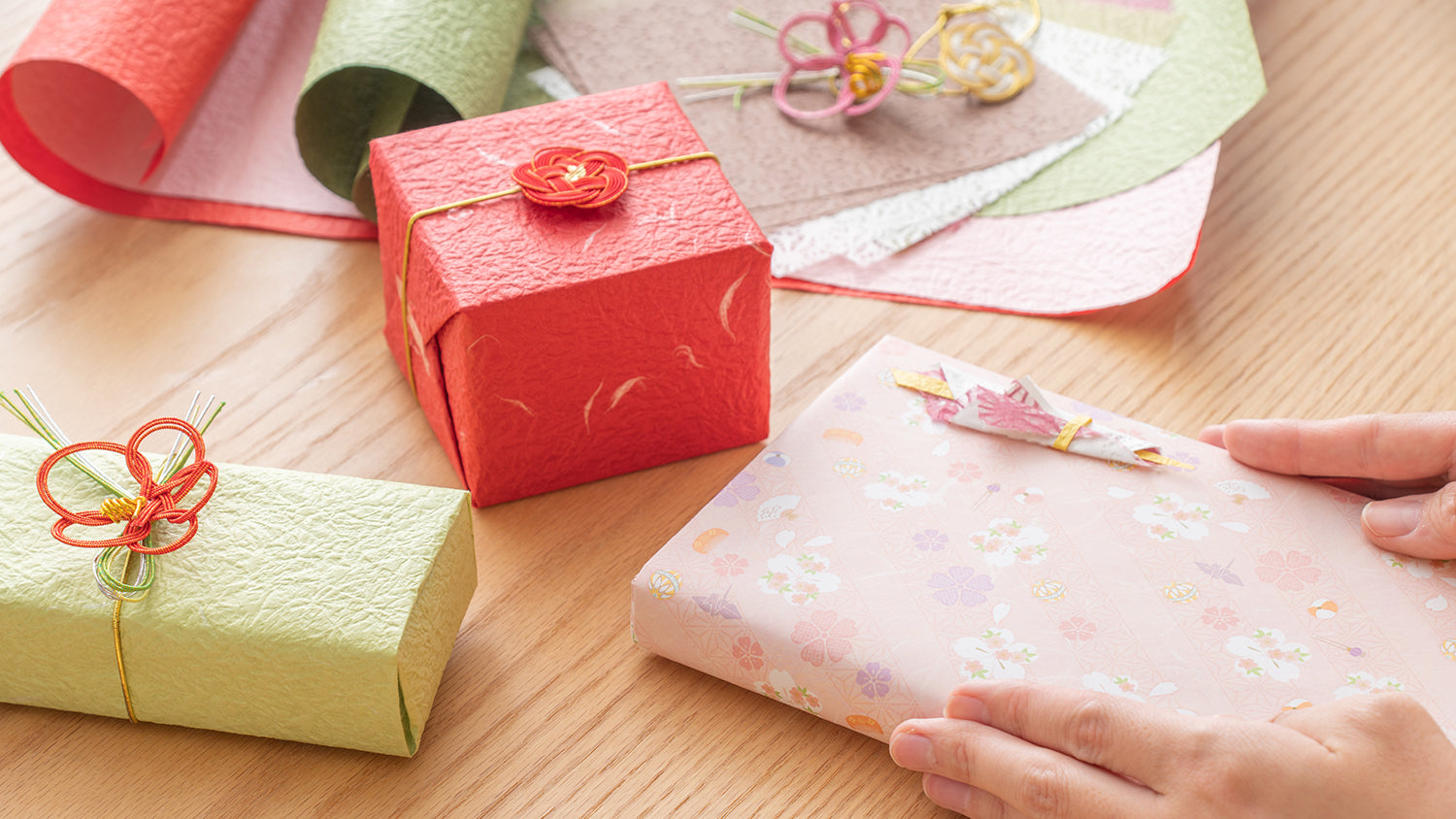

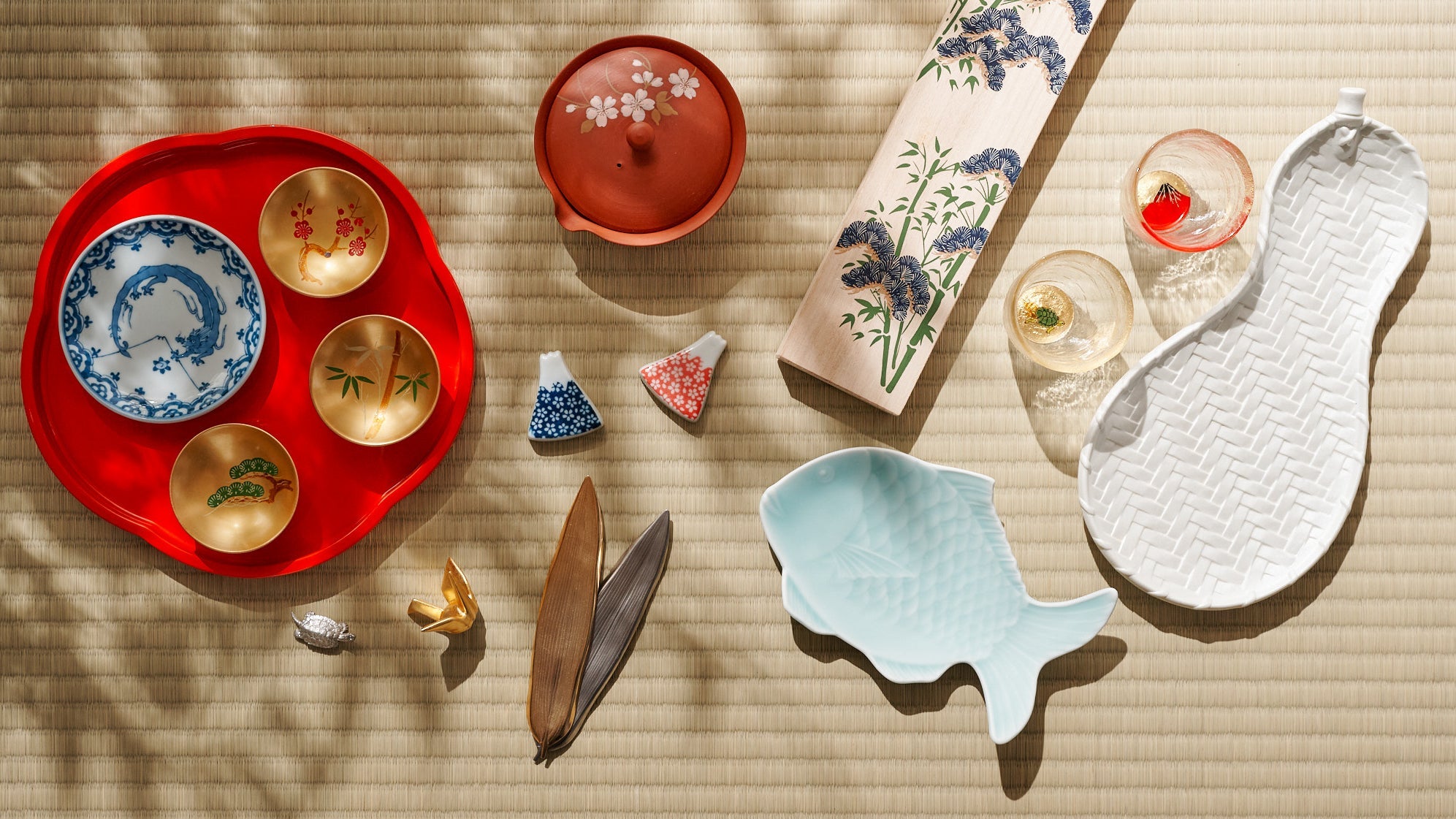
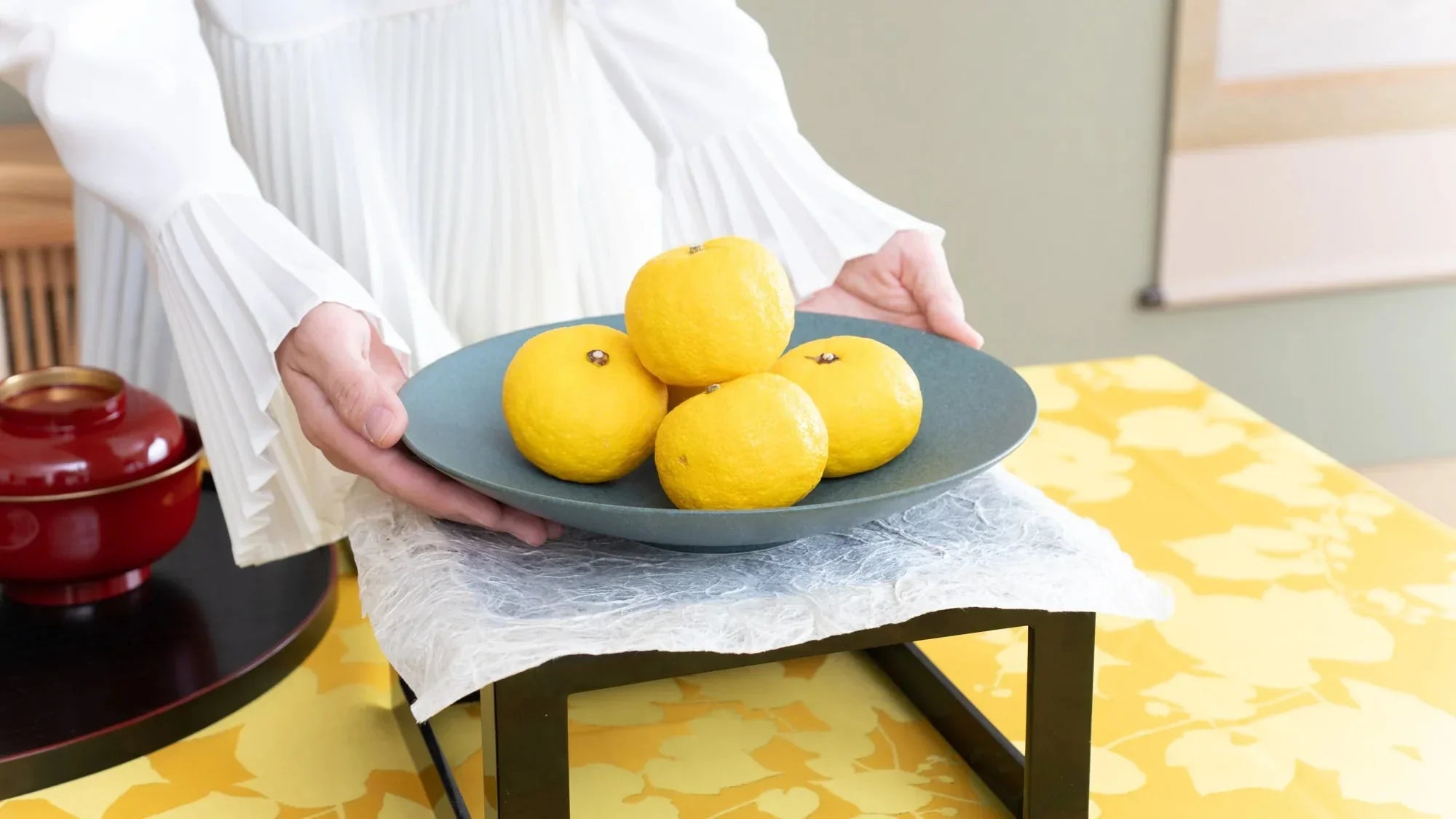
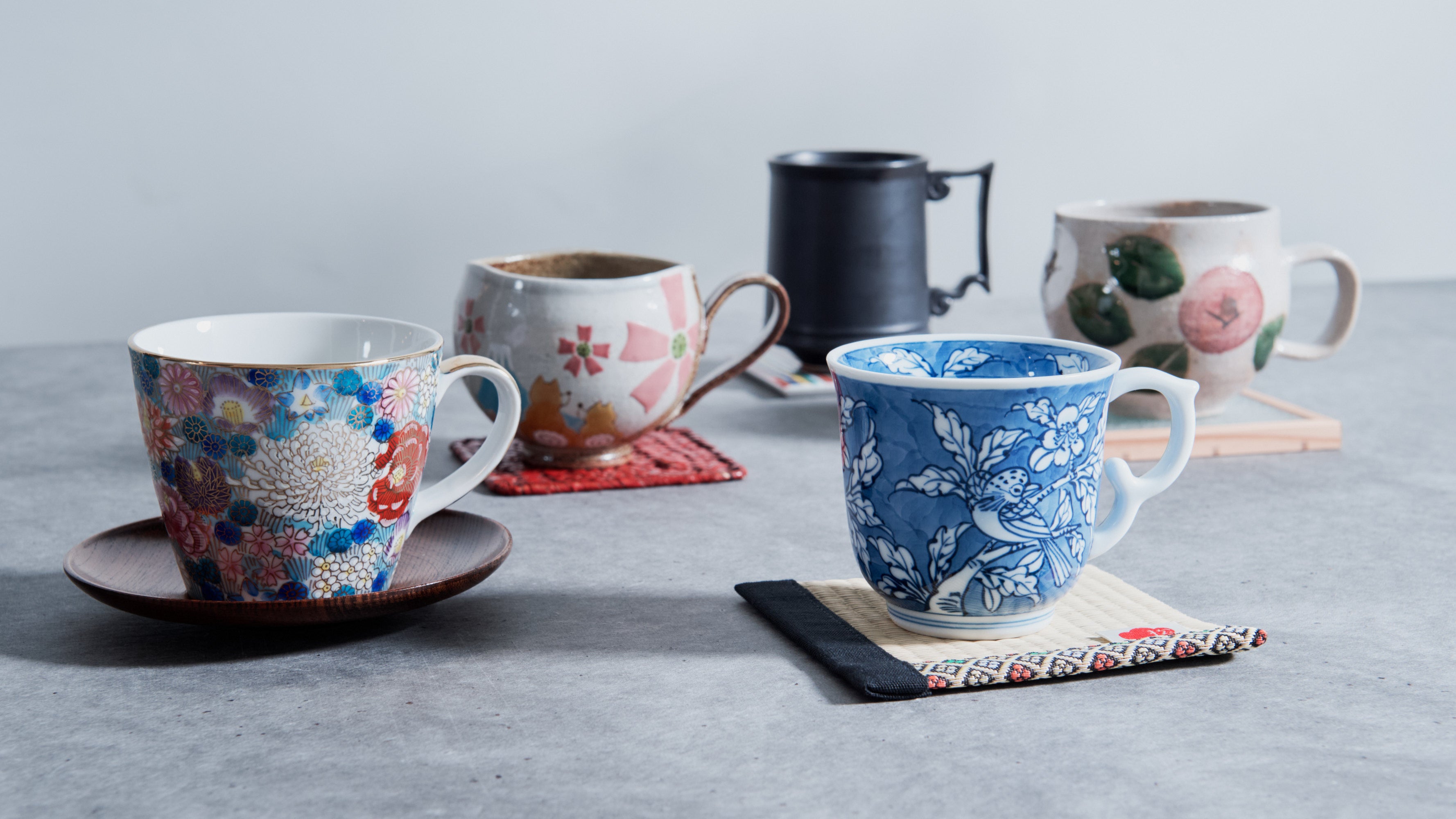
Leave a comment
This site is protected by hCaptcha and the hCaptcha Privacy Policy and Terms of Service apply.